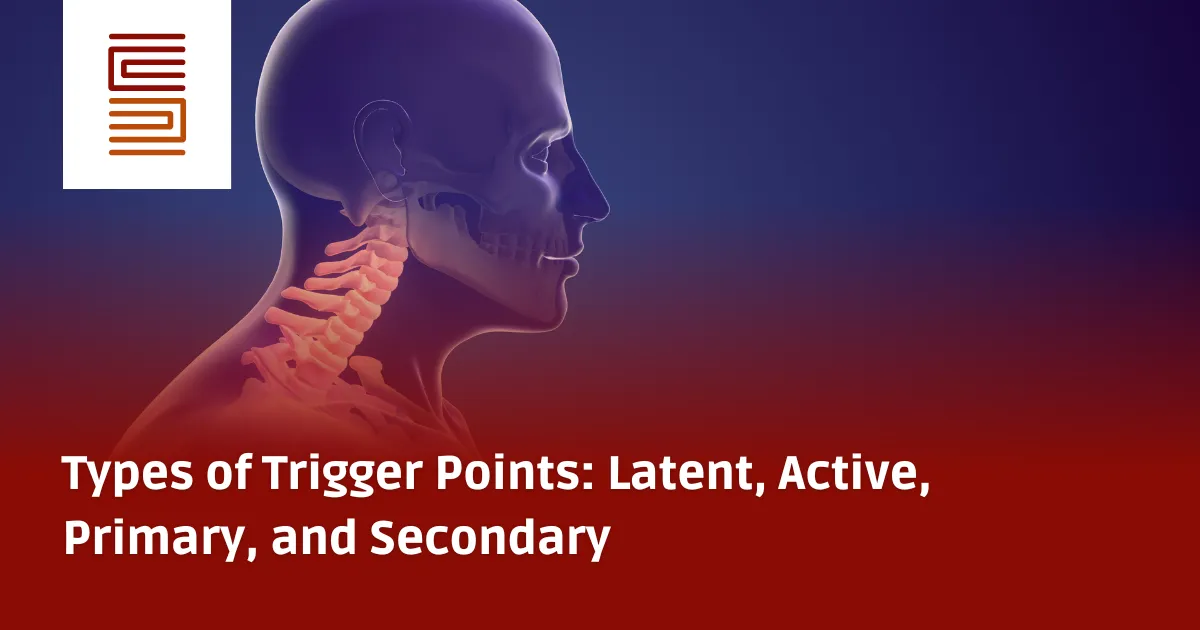What Causes Trigger Points? Understanding Muscle Overload and Dysfunction
Learn what causes trigger points, including muscular overload, poor posture, and repetitive strain. Understand how trigger points develop and how to manage them effectively.
Understanding the Cause of Trigger Points
Trigger points develop due to a malfunction in the myoneural junction, the site where nerve impulses signal muscles to contract. When this junction is impaired, muscle fibers remain in a constant state of contraction, forming a painful knot known as a trigger point.
However, from a clinical perspective, it is equally important to identify the underlying factors that cause the myoneural junction to malfunction in the first place. The primary cause of trigger points is muscular overload, but there are several contributing factors.
What is Muscular Overload?
Muscular overload occurs when a muscle is forced to perform a function that exceeds its capacity. This overload is not limited to lifting heavy objects but can also result from poor posture, repetitive movements, or prolonged static positions.
Types of Muscular Overload:
- Excessive Strength Demand – A sudden force that exceeds a muscle’s contractile strength.
- Excessive Endurance Demand – Continuous exertion beyond the muscle’s ability to sustain.
- Prolonged Shortened Position – Holding a muscle in a contracted state for too long.
- Prolonged Elongated Position – Keeping a muscle stretched for extended periods.
- Increased Resting Muscle Tension – Factors such as stress or nervous system dysfunction that increase baseline muscle tightness.
Common Causes of Trigger Points
Several lifestyle and physical factors can predispose muscles to overload, leading to trigger points.
1. Traumatic Injury
- Falls, automobile accidents, or sports injuries can cause muscle imbalances and strain weak muscles, leading to trigger point activation.
2. Heavy Lifting or Twisting Movements
- Lifting objects that are too heavy or using improper technique can overload muscles, leading to trigger points in the back, shoulders, and legs.
3. Beginning a New Exercise Program
- Sudden changes in exercise routines or overtraining can exceed muscle endurance, causing muscle fatigue and trigger points.
4. Repetitive Movements
- Continuous actions, such as typing, lifting, or assembly-line work, can lead to overuse injuries and the formation of trigger points.
5. Poor Posture and Static Positions
- Sitting for long periods or maintaining awkward postures (e.g., leaning over a desk or slouching) can overload specific muscles, leading to persistent tightness and discomfort.
6. Emotional Stress and Tension
- Stress-related muscle tension can increase resting muscle tone, contributing to trigger point development, particularly in the neck, shoulders, and lower back.
7. Muscle Disuse or Immobilization
- Extended periods of inactivity, such as after surgery or injury, can weaken muscles, making them more susceptible to overload and trigger points.
8. Referred Pain and Motor Distortions
- Trigger points in one muscle can cause referred pain in another area, leading to secondary trigger points that further exacerbate discomfort and muscle dysfunction.
Acute vs. Chronic Trigger Points
In acute pain cases, trigger points directly correlate with recent muscle overload or injury. However, in chronic pain cases, identifying the original cause may require a detailed history and physical examination to pinpoint long-term muscular dysfunction.
Preventing and Managing Trigger Points
Understanding what causes trigger points can help individuals take preventive measures and incorporate effective pain management techniques into their daily routine.
Strategies for Prevention and Relief:
✔ Maintain Good Posture – Avoid slouching and use ergonomic support when sitting for long periods.
✔ Gradually Increase Exercise Intensity – Warm up before workouts and avoid overtraining.
✔ Avoid Prolonged Static Positions – Take breaks from extended sitting or repetitive movements.
✔ Use Stress Reduction Techniques – Deep breathing, meditation, and relaxation exercises can lower baseline muscle tension.
✔ Stretch and Strengthen Muscles – Engage in regular flexibility and strength training exercises to keep muscles resilient and balanced.
How NMSN Can Help with Trigger Point Management
At New Mexico Support Network (NMSN), we provide comprehensive care and support to help individuals manage muscle-related pain and improve mobility.
✔ Home Care Services – Assisting individuals with mobility challenges and pain management.
✔ Hospice Care Assistance – Offering compassionate pain relief for individuals with chronic conditions.
Take Control of Your Pain Today
If you are struggling with persistent muscle pain or trigger points, professional support can help restore movement and improve comfort.
For expert guidance, contact New Mexico Support Network today.
Email: care@nmsupport.com
Phone: +1 833-773-0033 or +1 575-449-2009
Visit: New Mexico Support Network




